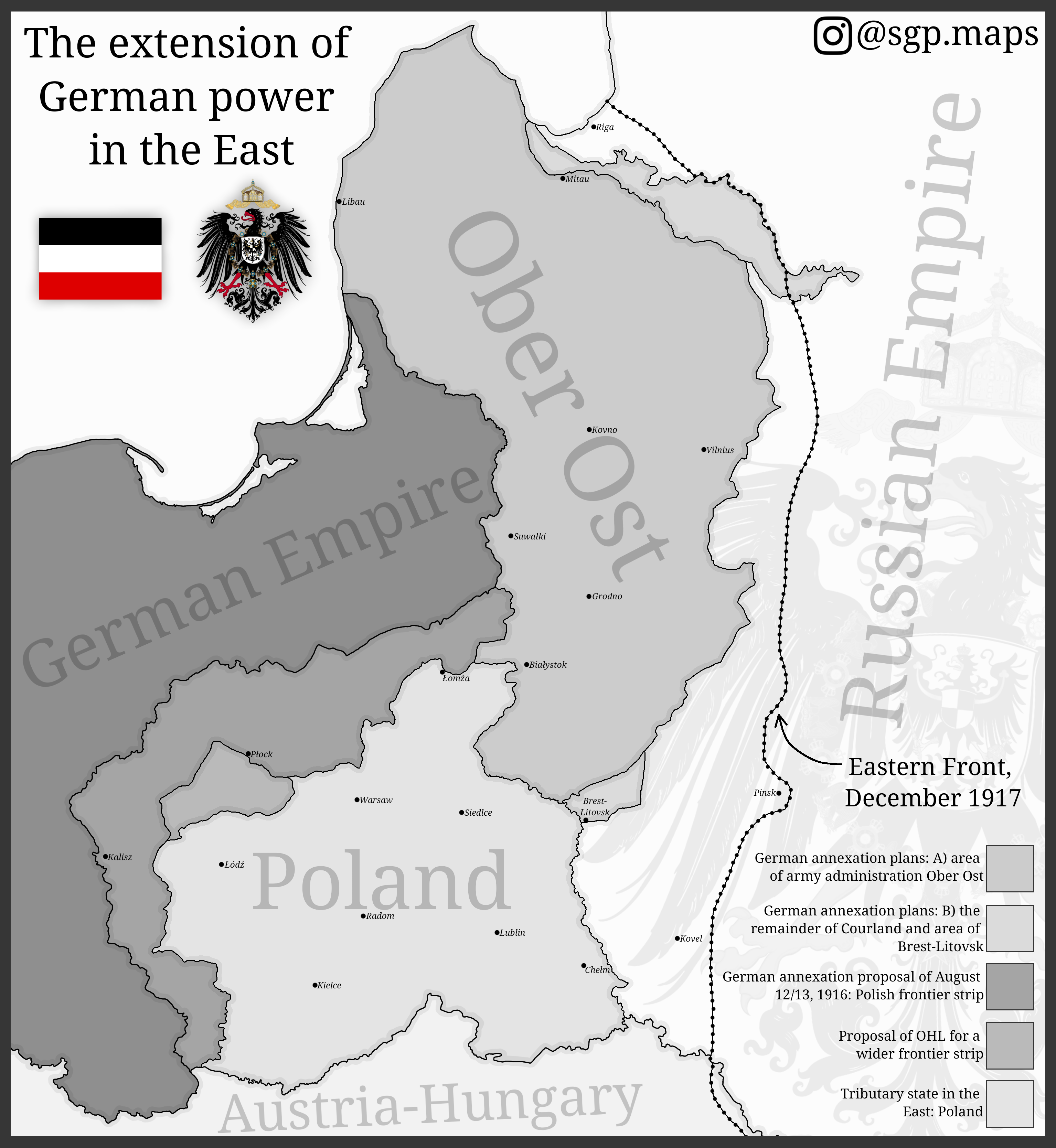Map of German Expansion in Eastern Europe


Marcus Rodriguez
Historical Geography Expert
Marcus Rodriguez specializes in historical cartography and geographic data analysis. With a background in both history and geography, he brings unique...
Geographic Analysis
What This Map Shows
The map titled "The Extension of German Power in the East" illustrates the territorial ambitions of Germany during World War I, specifically focusing on the areas of Eastern Europe that were targeted for annexation and administration. It provides a visual representation of the strategic objectives that Germany sought to achieve as it aimed to expand its influence in the region. The visualization captures not only the intended territorial gains but also the complex geopolitical landscape of the time, highlighting the various nations and territories involved.
Deep Dive into German Expansion Policies
Germany's aspirations for expansion in Eastern Europe during World War I were deeply rooted in its quest for power and resources. The notion of acquiring land was not merely a goal of territorial integrity; it was a strategic move designed to bolster Germany's status as a dominant European power. This ambition can be traced back to the broader context of imperialism, where nations raced to acquire colonies and territories in pursuit of economic gain and prestige.
Interestingly, the German government, particularly under Kaiser Wilhelm II, believed that expanding eastward would provide access to vital resources, agricultural land, and new markets for German goods. The fertile plains of Poland, for instance, were seen as crucial for agricultural production, which would support the German war effort and future economic stability.
Moreover, the German military strategy, as articulated by military leaders, emphasized the importance of securing the eastern front. By establishing control over Eastern Europe, Germany aimed to create a buffer zone against Russia and potentially exert influence over the newly formed states following the collapse of empires like the Austro-Hungarian and Ottoman Empires.
What’s fascinating is that Germany's expansionist policies also had a cultural dimension, as they sought to promote German settlement in these areas. The notion of ‘Drang nach Osten’ (Drive to the East) was not just about military conquest; it was also about the resettlement of Germans in Eastern territories, which would, in turn, facilitate the spread of German culture and language.
Regional Analysis
Breaking down the regions depicted on the map, we see a varied landscape of ambition and conflict. In Poland, for instance, the German plans focused on annexing areas rich in agriculture and resources. The Prussian-led partitions of Poland earlier in the 19th century had already laid the groundwork for territorial claims, and World War I presented a renewed opportunity for further annexation.
In the Baltic States, which included Estonia, Latvia, and Lithuania, Germany's plans involved not only military control but also the establishment of a Germanic population through settlement. These regions were strategic not only for their resources but also for their locations, providing critical access to the Baltic Sea and trade routes.
Interestingly, the map also reflects the aspirations towards Ukraine, which was seen as the breadbasket of Europe. Control over this territory meant control over grain supplies, which was vital for sustaining both the military and the civilian population back in Germany. The ambitions in Ukraine further illustrate the interconnectedness of military and economic strategies during this period.
Significance and Impact
The significance of German expansion in Eastern Europe during World War I cannot be overstated. It laid the foundation for post-war borders and influenced the political landscape of Europe in the decades that followed. The Treaty of Versailles and subsequent agreements reshaped the map of Europe, often reflecting the very ambitions that this map illustrates.
In contemporary discussions, this historical context reminds us of the lasting impact of territorial ambitions on national identities and international relations. The scars of World War I are still visible in the geopolitical dynamics of Eastern Europe today, with ongoing tensions and conflicts partly rooted in historical grievances and territorial disputes.
Looking ahead, the lessons from this period invite us to consider how nations navigate their aspirations in a complex world. The balance between national interests and international cooperation remains a critical challenge, and understanding the historical context of territorial ambitions can provide insights into current geopolitical trends. Ever wondered how the past shapes our present? The map of German expansion serves as a poignant reminder of this dynamic interplay.
Visualization Details
- Published
- October 11, 2025
- Views
- 44
Comments
Loading comments...